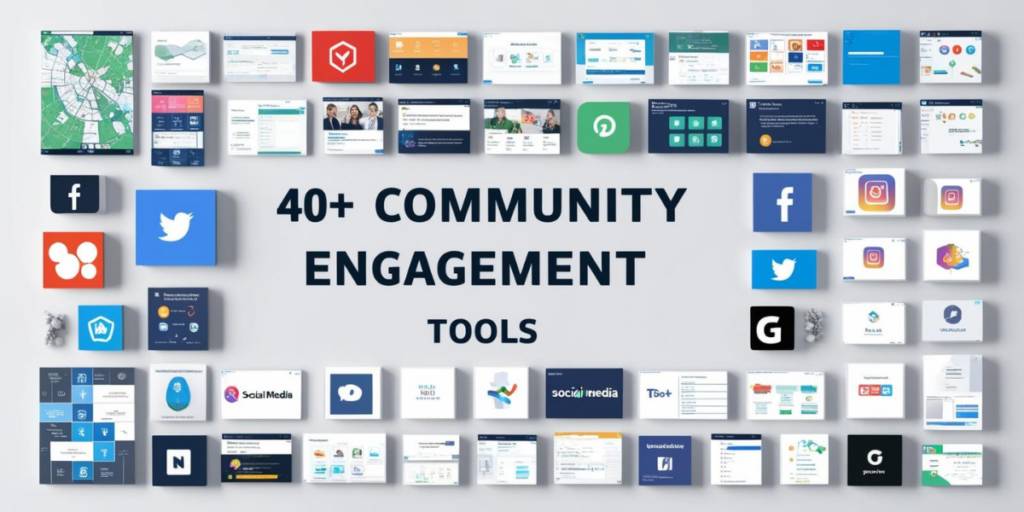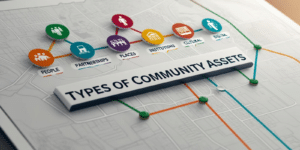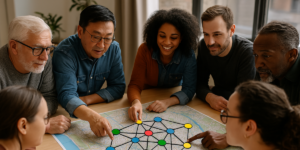This comprehensive guide explores the essential frameworks, digital platforms, and proven methodologies that power successful community engagement initiatives. From time-tested frameworks like IAP2’s Spectrum of Public Participation to cutting-edge digital solutions for network mapping and collaborative decision-making, we’ll examine tools that help organizations move beyond traditional “top-down” approaches toward genuine community empowerment.
Let’s explore how these tools can help your organization build stronger, more connected communities through authentic engagement and collaboration.
Table of Contents
Frameworks and Models
These community engagement frameworks and models are a helpful theoretical foundation for developing a community engagement strategy, plan, or initiative grounded in research.
1. IAP2 Spectrum of Public Participation
A widely used framework by the International Association for Public Participation, outlining five levels of engagement: Inform, Consult, Involve, Collaborate, Empower. It helps agencies and nonprofits determine the public’s role in any project, from simply providing information to giving full decision-making power.
Each level comes with a stated goal and “promise” to the public, ensuring clarity about how much influence the community will have. This model guides governments and health organizations in setting realistic engagement goals and matching methods to the intended level of community influence.
2. Arnstein’s Ladder of Citizen Participation
A classic model (1969) illustrating eight rungs of citizen power in decision-making, from non-participation to full citizen control. The lowest rungs (Manipulation and Therapy) are non-participative, followed by degrees of tokenism (Informing, Consultation, and Placation), and the highest rungs (Partnership, Delegated Power, and Citizen Control) grant increasing degrees of community power.
This framework is a touchstone in community planning and health advocacy, reminding practitioners to strive beyond token consultation toward genuine power-sharing with community members.
3. Asset-Based Community Development (ABCD)
A grassroots development model that mobilizes a community’s existing assets and strengths rather than focusing on deficits. Pioneered by John McKnight and Jody Kretzmann, ABCD involves mapping local resources (skills, associations, institdutions) and empowering residents to drive development using what they already have.
Community health organizations use ABCD to engage residents as partners, leveraging local knowledge and social ties to design solutions that are sustainable and community-driven. This framework’s core premise is that every community has latent resources and “everyone has gifts” to contribute to improvement.
4. Collective Impact Framework
A collaborative model for tackling complex social problems (like public health issues) through multi-sector coalitions. Coined by John Kania and Mark Kramer (2011), it emphasizes five conditions for success: a common agenda, shared measurement systems, mutually reinforcing activities, continuous communication, and a backbone support organization to coordinate the effort.
Unlike loose collaborations, collective impact initiatives have a structured process and dedicated staff to align diverse stakeholders. Health coalitions and cross-sector partnerships adopt this framework to unite nonprofits, government agencies, hospitals, and community groups around shared goals (e.g. “healthy city” initiatives), using data and regular communication to drive large-scale change.
5. Community Readiness Model (CRM)
A stage-based model that assesses how prepared a community is to address a particular health or social issue. Developed by the Tri-Ethnic Center at Colorado State University, CRM defines a nine-stage continuum from “No Awareness” of the problem, through stages like Denial/Resistance, Vague Awareness, up to Preparation, Initiation, and ultimately Community Ownership of the issue.
By measuring dimensions such as leadership support, community knowledge, and resources, organizations can tailor interventions to the community’s readiness level. Nonprofits and public health agencies use this tool to ensure their engagement efforts (e.g. launching a new program or policy) align with the community’s capacity and willingness to act, thereby increasing the chances of success.
6. Social Network Analysis (SNA)
A methodology (and conceptual framework) for mapping and analyzing relationships among people or organizations. SNA visualizes networks as nodes and ties, helping to identify key connectors, information flows, and collaboration gaps within a community. Network analysis can uncover how organizations like clinics, charities, schools, and local governments interact in community health, revealing hubs of influence or isolated stakeholders.
SNA is a powerful tool for understanding and harnessing the power of networks and relationships. For example, a public health coalition might use SNA to map regional partnerships to better coordinate services or identify which community leaders could best disseminate health information.
7. Two Loops Model for Systems Change
A framework developed by Margaret Wheatley and Deborah Frieze that illustrates how systems change occurs through the emergence and decline of different initiatives. The model shows two interconnected loops: one representing the current dominant system in decline, and another showing emergent innovations rising to become the new normal. This model helps community organizers understand where to focus energy – whether supporting pioneer initiatives, maintaining essential current services, or helping bridge between old and new approaches.
💡 Tool Tip!
See also our PARTNER CPRM software below, which is built using social network analysis methods specifically for community engagement and ecosystem mapping.

Templates and Toolkits
Here are some templates and toolkits for community engagement to help you get started quickly rather than starting completely from scratch.
8. Community Tool Box (University of Kansas)
A free online resource with thousands of pages of practical guidance for building healthier communities. It offers step-by-step toolkits, checklists, and how-to guides on topics like community assessment, strategic planning, intervention implementation, evaluation, and advocacy. Available in multiple languages, the Tool Box has over 300 modules (e.g. “Conducting Focus Groups”, “Analyzing Community Problems”) that can be mixed and matched.
This is a foundational go-to resource for community-based organizations and health promoters, providing templates for community meetings, survey examples, facilitation tips, and more – all oriented toward empowering local action and social change.
9. Nonprofits Integrating Community Engagement (NICE) Guide
A comprehensive guide from the Building Movement Project and Alliance for Nonprofit Management, aimed at helping service-oriented nonprofits build core competencies in constituent engagement. It includes frameworks, self-assessment tools, case studies, and facilitation guides for integrating the voices of clients and community members into an organization’s programs and decision-making.
Designed for capacity-builders and consultants, the NICE Guide covers how to center lived experience, shift organizational culture, and develop strategies so that those who receive services become partners in program design and advocacy. By following this guide, health and human service nonprofits can evolve from simply delivering services to actively engaging constituents as leaders and change agents.
10. NNLM Community Engagement Resource Guide (MAP-IT Framework)
Created by the National Network of Libraries of Medicine, this guide uses the MAP-IT model (Mobilize, Assess, Plan, Implement, Track) to walk through the community engagement process. It is intended for librarians, public health practitioners, researchers, and community health workers involved in health information outreach.
For each step of MAP-IT, the guide provides curated tools and examples – for instance, mobilization techniques to form partnerships, community assessment templates, planning checklists, implementation tips, and evaluation metrics. By following MAP-IT, users get a clear pathway for planning and evaluating engagement initiatives, ensuring they address unique community needs methodically. This toolkit is especially useful in health literacy projects and outreach to underserved populations.
11. County Health Rankings & Roadmaps – Take Action Cycle
An action-oriented toolkit associated with the County Health Rankings & Roadmaps program (Robert Wood Johnson Foundation and University of Wisconsin). The Take Action Cycle is a stepwise model to guide communities through health improvement: Work Together, Assess Needs & Resources, Focus on What’s Important, Choose Effective Policies & Programs, Act on What’s Important, and Evaluate Actions.
The Roadmaps Action Center provides downloadable tools for each step, such as partnership building guides, survey instruments for assessing community health, evidence-based strategy menus, and evaluation planning templates. Local health coalitions, health departments, and multi-sector partnerships use this toolkit as a roadmap to structure their community health assessments (CHAs) and community health improvement plans (CHIPs).
12. Community Engagement Toolkit (Rural Health)
Example of a context-specific toolkit: The Center for Rural Health at University of North Dakota offers a Community Engagement Toolkit tailored for rural communities. (While numerous such toolkits exist, this one is notable.) It serves as a step-by-step guide to increase community engagement around a common goal, with worksheets for stakeholder identification, meeting planning, communications, and sustaining engagement.
Rural and smaller communities often face unique challenges (limited resources, geographic dispersion), and this toolkit provides adaptable templates to conduct listening sessions, establish local advisory committees, and gather input from underrepresented voices. By using a toolkit like this, local health officials and nonprofit leaders can systematically plan their engagement activities, ensuring no critical step (like engaging tribal entities, if applicable, or evaluating engagement success) is overlooked.
13. Community Member Engagement Resource Center
This comprehensive resource center curates tools, guides, and best practices for authentically engaging community members in health program design and delivery. It focuses particularly on engaging individuals with lived experience of healthcare challenges, offering practical strategies for building meaningful partnerships. The Resource Center includes frameworks for compensation, training materials, and case studies showing successful community engagement in action.
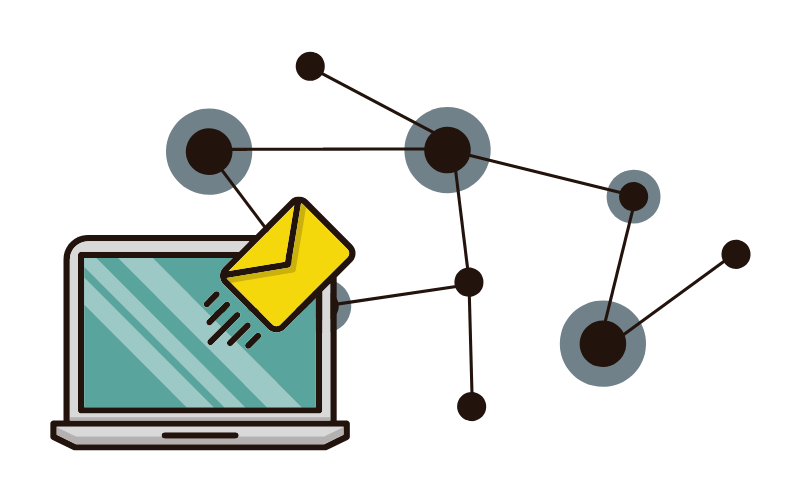
Get our monthly newsletter with resources for cross-sector collaboration, VNL recommended reading, and upcoming opportunities for engaged in the “network way of working.”
Software and Platforms
There are a ton of great software solutions and online platforms to support community engagement efforts. This is a small list of some of our favorite options—it is by no means exhaustive.
14. PARTNER CPRM (Community Partner Relationship Management)
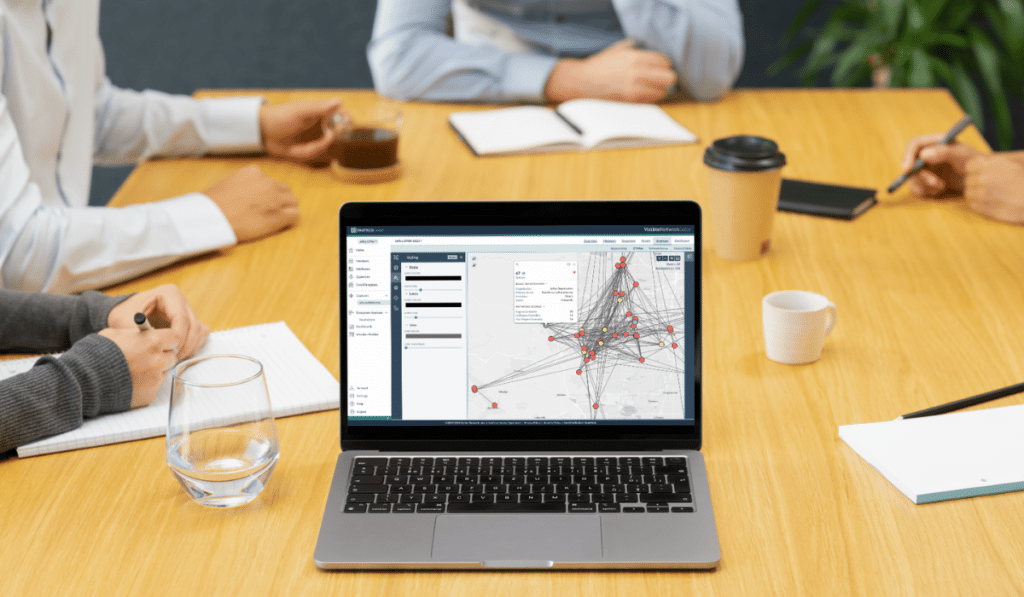
A specialized software platform by Visible Network Labs for mapping and managing community partnerships and networks. PARTNER is built on network science principles to collect data on how organizations collaborate and visualize those connections. Users (such as public health coalitions, nonprofit networks, collective impact backbones, and community partnerships) can use PARTNER to send out network surveys via its Survey Builder, automatically generating network maps and metrics illustrating trust, resource exchange, and relationship strength among partners.
The platform’s unique features include validated metrics and reports (developed from years of research) that help identify key players or structural gaps in the network. Organizations gain actionable insights by analyzing the structure and quality of partnerships – for example, finding more efficient collaboration pathways or tracking changes in network connectivity over time. In short, PARTNER CPRM acts as a “CRM for networks,” enabling health collaboratives and multi-sector initiatives to strengthen their partner relationships and measure the impact of their collective efforts.
15. Kumu (Systems Mapping Tool)
An online platform for mapping and visualizing complex networks, systems, and stakeholder relationships. Kumu allows users to input data (manually or via spreadsheet) and automatically generates interactive network maps with customizable layouts. It’s used by community organizations, evaluators, and even agencies like UNDP to map connections among stakeholders or causes in a system.
Unique features include the ability to create attractive visualizations with color-coding and sizing based on data, to attach rich content (notes, videos) to any stakeholder or relationship, and to share maps publicly via a link or embed. For example, a public health department could use Kumu to map all organizations involved in addressing housing, education, and health in a city, helping identify silos or opportunities for partnership.
16. EngagementHQ (Bang the Table/Granicus) –
A comprehensive digital engagement platform widely used by local governments and public agencies in the US, UK, Canada, Australia, and New Zealand. EngagementHQ provides an “engagement toolbox” with multiple integrated tools: online discussion forums, surveys, polls, Q&A sections, idea brainstorming boards, interactive maps for geospatial feedback, storytelling modules, and even participatory budgeting portals. It also includes participant relationship management features and analytics dashboards.
The platform aims to enable agencies to involve citizens in online decision-making processes, reaching far more people than traditional in-person meetings. For example, a city council can host a project page about a new park design on EngagementHQ, where residents can propose ideas, vote or comment on options, ask questions, and see reports of how their feedback influenced the outcome.
17. ThoughtExchange (Community Dialouge System)
AI-enabled crowdsourcing and dialogue platform that allows leaders to quickly gather and prioritize input from large groups. Participants join an online “exchange” where they anonymously share their answers to an open-ended question and then rate each other’s responses on a five-star scale. This process surface community priorities by leveraging collective intelligence – the most supported ideas rise to the top in the ratings.
ThoughtExchange is used in education (e.g. school districts asking parents and teachers for feedback), nonprofits, and companies to inform decision-making with broad stakeholder input. Unique features include anonymity (promoting honest feedback and inclusion of quieter voices), real-time analytics of emerging themes, and the ability to host exchanges live during meetings or over a period of days.
18. Mighty Networks (Community Building Platform)
A popular software platform for creating branded online communities. Mighty Networks enables nonprofits or initiatives to bring their members, content, events, and courses together in one place. It provides features like member profiles and directory, discussion boards, sub-groups, direct messaging, and the ability to host webinars or live chats.
For organizations working across a region or who want to maintain an ongoing community of practice, this platform offers more control and customization than generic social media groups. Unique features include the option to charge memberships or course fees, integration with email marketing, and an interface that can be tailored to your branding.
19. Go Vocal (Community Resident Engagement Solution)
A mobile-first platform designed to increase community participation and feedback through easy-to-use digital tools. Go Vocal helps organizations reach residents where they are, offering features like text message surveys, multilingual capabilities, and simplified feedback collection. The platform is particularly effective for engaging traditionally underrepresented populations and tracking engagement metrics across different outreach channels.
💡 Tool Tip!
Other notable platforms in this space include open-source forum software Discourse – great for moderated community discussions – and all-in-one community platforms like Hivebrite or Bettermode.
Additionally, many groups repurpose social media (Facebook Groups, LinkedIn) or collaboration tools (Slack, below) as engagement platforms. The best choice depends on the community’s preferences and the organization’s goals and budget.

Collaboration and Communication
Every community engagement initiative requires tools to communicate and collaborate with community members, partners, and stakeholders. Get started with these top options for supporting your collaborative relationships.
20. Slack (Team Collaboration Hub)
A specialized software platform by Visible Network Labs for mapping and managing community partnerships and networks. PARTNER is built on network science principles to collect data on how organizations collaborate and visualize those connections. Users (such as public health coalitions, nonprofit networks, collective impact backbones, and community partnerships) can use PARTNER to send out network surveys via its Survey Builder, automatically generating network maps and metrics illustrating trust, resource exchange, and relationship strength among partners.
The platform’s unique features include validated metrics and reports (developed from years of research) that help identify key players or structural gaps in the network. Organizations gain actionable insights by analyzing the structure and quality of partnerships – for example, finding more efficient collaboration pathways or tracking changes in network connectivity over time. In short, PARTNER CPRM acts as a “CRM for networks,” enabling health collaboratives and multi-sector initiatives to strengthen their partner relationships and measure the impact of their collective efforts.
21. Public Input (Community Engagement Platform)
An online platform for mapping and visualizing complex networks, systems, and stakeholder relationships. Kumu allows users to input data (manually or via spreadsheet) and automatically generates interactive network maps with customizable layouts. It’s used by community organizations, evaluators, and even agencies like UNDP to map connections among stakeholders or causes in a system.
Unique features include the ability to create attractive visualizations with color-coding and sizing based on data, to attach rich content (notes, videos) to any stakeholder or relationship, and to share maps publicly via a link or embed. For example, a public health department could use Kumu to map all organizations involved in addressing housing, education, and health in a city, helping identify silos or opportunities for partnership.
22. Miro (Online Whiteboard for Interactive Collaboration)
A comprehensive digital engagement platform widely used by local governments and public agencies in the US, UK, Canada, Australia, and New Zealand. EngagementHQ provides an “engagement toolbox” with multiple integrated tools: online discussion forums, surveys, polls, Q&A sections, idea brainstorming boards, interactive maps for geospatial feedback, storytelling modules, and even participatory budgeting portals. It also includes participant relationship management features and analytics dashboards.
The platform aims to enable agencies to involve citizens in online decision-making processes, reaching far more people than traditional in-person meetings. For example, a city council can host a project page about a new park design on EngagementHQ, where residents can propose ideas, vote or comment on options, ask questions, and see reports of how their feedback influenced the outcome.
23. Microsoft Teams and Google Workspace
AI-enabled crowdsourcing and dialogue platform that allows leaders to quickly gather and prioritize input from large groups. Participants join an online “exchange” where they anonymously share their answers to an open-ended question and then rate each other’s responses on a five-star scale. This process surface community priorities by leveraging collective intelligence – the most supported ideas rise to the top in the ratings.
ThoughtExchange is used in education (e.g. school districts asking parents and teachers for feedback), nonprofits, and companies to inform decision-making with broad stakeholder input. Unique features include anonymity (promoting honest feedback and inclusion of quieter voices), real-time analytics of emerging themes, and the ability to host exchanges live during meetings or over a period of days.
24. SurveyMonkey (Survey Software)
A popular software platform for creating branded online communities. Mighty Networks enables nonprofits or initiatives to bring their members, content, events, and courses together in one place. It provides features like member profiles and directory, discussion boards, sub-groups, direct messaging, and the ability to host webinars or live chats.
For organizations working across a region or who want to maintain an ongoing community of practice, this platform offers more control and customization than generic social media groups. Unique features include the option to charge memberships or course fees, integration with email marketing, and an interface that can be tailored to your branding.
25. Community Engagement Plan Template
A mobile-first platform designed to increase community participation and feedback through easy-to-use digital tools. Go Vocal helps organizations reach residents where they are, offering features like text message surveys, multilingual capabilities, and simplified feedback collection. The platform is particularly effective for engaging traditionally underrepresented populations and tracking engagement metrics across different outreach channels.
💡 Tool Tip!
Choosing the right collaboration tool depends on the partners’ preferences and tech comfort. Slack vs. Teams, or Zoom vs. Google Meet – each community might gravitate toward one. The important thing is that some channel exists for day-to-day communication outside of formal meetings, and some mechanism for co-working on documents or ideas in real time.
Combining these tools – e.g., using Slack for chat, Zoom for meetings, and Google Docs for co-writing – often creates a robust environment for continuous engagement.)
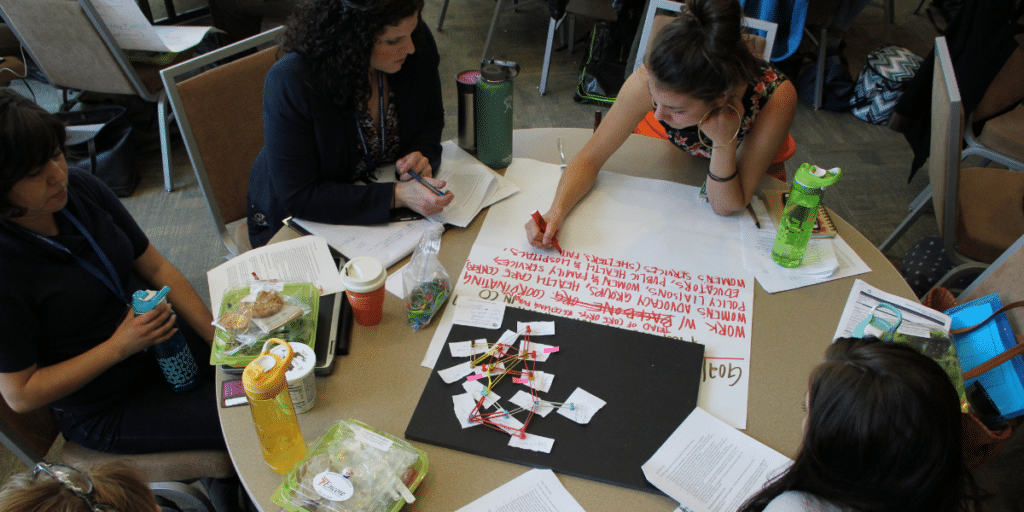
Engagement Methods
When it comes to the specific tactics and methods you use to engage with the community, you have dozens of options. These eight community engagement tools and tactics are a good place to start for your community engagement plan and strategy.
26. Community Forums and Town Halls
Traditional yet effective methods where community members gather (in person or virtually) to discuss issues, ask questions, and voice concerns in an open setting. Local governments, health agencies, or elected officials often organize town halls to get input or explain initiatives. They maximize inclusivity by being open to all, sometimes even broadly advertised via media. These forums can be structured with Q&A sessions, small breakouts, or open mic time. While straightforward, success depends on good facilitation
In community health, public forums are used for needs assessments (e.g., a hospital conducting a Community Health Needs Assessment might host forums to hear directly from residents about health challenges and strengths). The method’s strength is transparency – everyone hears each other’s views – and it can build trust when leaders genuinely listen and respond.
27. Focus Groups
A focused method involving facilitated small-group discussions (typically 6–12 participants) to delve deeper into specific topics or gather qualitative insights. Focus groups are especially useful for exploring nuanced perspectives from particular demographics or stakeholders – for example, conducting a focus group with local teenagers about mental health services, or with immigrant community members about barriers to healthcare. The facilitator uses a guide to prompt discussion, but participants are encouraged to talk to each other, react, and build on ideas.
Organizations often hold multiple focus groups to hear from different segments of the community (seniors, parents, healthcare providers, etc.). For instance, a health department designing a diabetes prevention program might run separate focus groups with patients, with clinic staff, and with community health workers to inform the program design. The output of focus groups – common themes, direct quotes, and stories – provides context and human perspective behind quantitative data.
28. World Café Conversations
An interactive method for hosting large-group dialogues by breaking into multiple small conversational tables that rotate participants. In a World Café, participants (often dozens or even 100+ people) split into table groups (typically 4-6 per table) and discuss a question for a set period (e.g. 20 minutes). Then they mix – everyone except the table host moves to a new table – and tackle a new question or the same question in light of prior discussions. This rotation can happen 2-3 times, after which insights are harvested from all tables. The atmosphere is casual and collaborative.
World Café is great for engaging diverse participants in creative thinking and finding common themes. For example, a community health coalition might use a World Café during a summit to generate ideas for improving local health equity – with different tables discussing topics like housing, nutrition, transportation, then rotating so ideas spread.
29. Participatory Budgeting (PB)
A democratic process that directly involves community members in deciding how to allocate part of a public or organizational budget. In PB, residents or stakeholders propose ideas for public spending (e.g. park improvements, community programs), often through neighborhood assemblies or online suggestion boxes. Volunteers or steering committees may vet proposals for feasibility, then the community is invited to vote on which projects to fund. The winning projects are implemented with the designated budget.
The unique feature of PB is empowerment through real dollars – participants see concrete results of their engagement, which can boost trust and civic participation. It’s especially powerful in engaging underrepresented communities; when designed well, PB processes actively involve youth, low-income residents, and others often left out of budgeting decisions.
30. Photovoice
An innovative, arts-based engagement method in which community members (often those from marginalized or less-heard groups) take photographs to document their realities and then share stories about what the images mean. Photovoice is grounded in the idea that people are experts in their own lives and that visuals can communicate needs and assets powerfully.
A typical photovoice project might involve training participants in basic photography, having them capture images over a few weeks related to a theme (e.g. “What affects our community’s health?”), then gathering to discuss the photos. Participants caption their photos and decide on key messages. The end product is often a public exhibit or presentation to policymakers where participants present their photos and narratives.
31. Deliberative Dialogues and Citizen Juries
Methods that engage community members in in-depth deliberation on complex issues to produce informed input or recommendations. Deliberative dialogues (often using models from the National Issues Forums or Everyday Democracy) bring diverse citizens together to weigh pros and cons of different approaches to a problem, guided by an impartial moderator and often using a discussion guide. The aim is not just to collect opinions, but to help participants understand trade-offs and each other’s perspectives.
Citizen juries (or panels) take this further – a randomly selected, demographically representative panel of citizens meets for multiple days to learn about an issue (through expert testimony, etc.), deliberate, and then deliver a formal recommendation (similar to a jury verdict) to authorities.
32. Polling (Poll Everywhere)
A dynamic polling tool that enables real-time audience feedback and interaction during presentations or events. This platform allows presenters to create various question types (multiple choice, word clouds, open-ended responses) that participants can answer via their phones or devices. Results display instantly, creating engaging visual feedback. Poll Everywhere is particularly useful for large community meetings where getting input from everyone verbally would be impractical – it gives every participant a voice while maintaining anonymity if desired.
33. Index of Community Engagement Techniques
A comprehensive resource from the Tamarack Institute that catalogs over 50 different techniques for engaging communities, from basic surveys to complex deliberative processes. This index provides detailed explanations of each method, including when to use it, required resources, and typical outcomes. It serves as an invaluable reference for practitioners seeking to match the right engagement approach to their specific context and goals.
💡 Tool Tip!
Other creative engagement methods include Open Space Technology (where participants create the agenda on the spot around a central theme), Appreciative Inquiry Summits (large-group strategy sessions focusing on a community’s positive core and envisioning future), Hackathons/Design Sprints (intense short-term teamwork to prototype solutions, often used in social innovation contexts), and Storytelling circles (sharing personal stories to build empathy and insight. The choice of method should fit the engagement purpose.
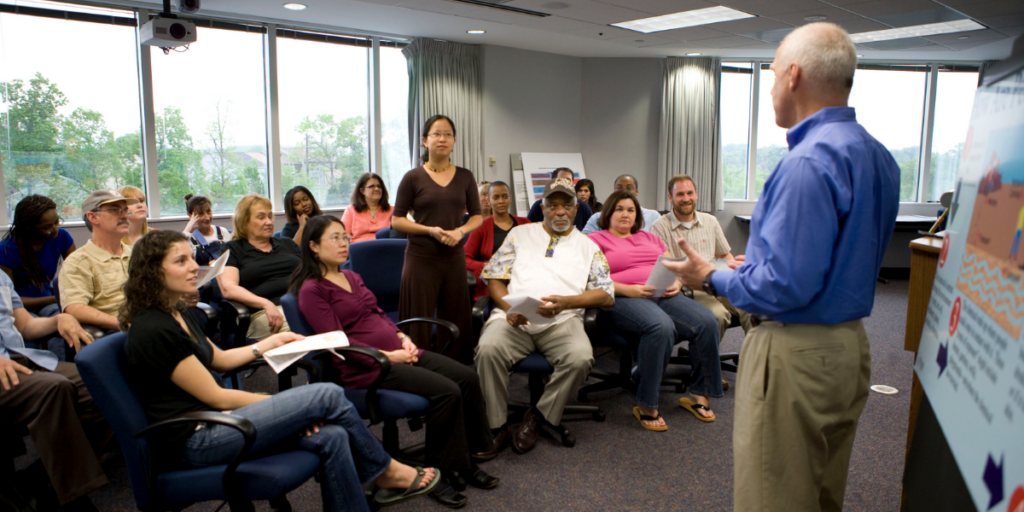
Research Guides and Methodologies
There are numerous research findings and frameworks to guide community engagement and participation. These are some of the most well-known academic resources for community engagement practice.
34. CDC’s Principles of Community Engagement
A seminal guide (developed by the U.S. Centers for Disease Control and Prevention, first published in 1997 with updated editions in 2011 and 2017) outlining core principles and best practices for effective community engagement. The second edition distilled nine principles that remain highly regarded.
These principles include: clearly defining your goals and community of focus; learning the community’s culture and power structures (“do your homework”); building trust and relationships early on; respecting the community’s right to self-determination (engagement should enable community agency, not be paternalistic); partnering with the community for mutual benefit; respecting diversity and tailoring engagement to the community’s norms; identifying and mobilizing community assets to support engagement; being willing to adapt and share control as partnerships evolve; and committing to long-term engagement and sustainability.
35. NCDD’s Core Principles for Public Engagement
Developed collaboratively by the National Coalition for Dialogue & Deliberation (NCDD) and other leaders in 2009, this is a set of seven aspirational principles that define high-quality public engagement. These principles include:
- Careful Planning and Preparation
- Inclusion and Demographic Diversity
- Collaboration and Shared Purpose
- Openness and Learning
- Transparency and Trust
- Impact and Action
- Sustained Engagement and Participatory Culture
These core principles emerged from a broad coalition of practitioners (including IAP2 and others) and reflect common values across dialogue, conflict resolution, and public participation fields. For organizations, these serve as a checklist or guide when crafting their public engagement strategy – for example, a city health department might use them to evaluate a planned series of community meetings.
36. Community-Based Participatory Research (CBPR)
A research methodology and philosophy wherein researchers partner equitably with community members in all aspects of a research project. In CBPR, community stakeholders are not just subjects or informants but co-investigators – helping to define the research questions, collect and analyze data, and apply the findings. The goal is to combine knowledge with action to benefit the community involved.
CBPR projects often address health disparities and are common in public health, as they ensure interventions are culturally appropriate and community-approved. Key principles of CBPR (as articulated by Barbara Israel and others) include recognizing the community as a unit of identity, building on strengths and resources within the community, facilitating collaborative partnerships in all research phases, integrating knowledge and intervention for mutual benefit, and a long-term process with commitment to sustainability.
37. NCCDH’s Guide to Engagement Frameworks (2013)
A lesser-known but valuable resource from the National Collaborating Centre for Determinants of Health (Canada). This reference guide reviews 16 different community engagement frameworks used in public health and equity contexts. It was developed to help public health practitioners understand various models (many of which appear in this list) and choose an appropriate one for their initiatives.
Each framework in the guide is summarized with its focus, principles, strategies, success factors, and evaluation tips. The guide emphasizes frameworks that address health equity and the social determinants of health – for instance, it covers models that ensure participation of marginalized groups and attention to power dynamics. Users of the guide can compare approaches: e.g., seeing how a community empowerment model differs from an IAP2-style participation mode.
38. Network Weaver Handbook (June Holley, 2012)
A practitioner-oriented handbook for those looking to build and sustain networks for social change. A hidden gem in the engagement field, this handbook provides practical guidance for network weavers – individuals who connect people, facilitate collaborations, and help networks self-organize. It is essentially a guide to catalyzing new networks or enhancing existing ones, offering tools and strategies to strengthen relationships and collective action.
The content includes topics like how to identify network members and their skills, how to facilitate introductions and trust-building, ways to improve network communication, governance in networks (shared leadership models), and the use of mapping and analysis (with SNA) to inform network strategy.
39. Liberating Structures (Facilitation Toolkit)
A collection of 33 simple facilitation techniques (micro-structures) designed to include everyone in shaping outcomes, as an alternative to more limiting meeting formats. Liberating Structures (LS) are a hands-on methodology that engagement practitioners can use in meetings, workshops, or trainings to generate lively participation and ideas.
Examples include 1-2-4-All (individuals think about a question, then discuss in pairs, then foursomes, then whole group – ensuring ideas are percolated and every voice influences the conversation) and Troika Consulting (small groups where one person shares a challenge and receives peer coaching from two others). The premise of LS is that traditional formats like open discussions or lectures often leave out many voices and stifle innovation, whereas these structured activities liberate group creativity and engagement.
40. Data-Driven Management Strategies in Public Health Collaboratives (2011)
A seminal article published in Public Health Reports that established evidence-based guidelines for managing public health partnerships using network data. The paper outlines key strategies for using partnership metrics and network analysis to improve collaboration outcomes, including measuring partnership characteristics, identifying gaps and opportunities, and making data-driven decisions about resource allocation and partnership development.
These insights helped lay the foundation for tools like PARTNER CPRM and established network analysis as a critical approach for evaluating and strengthening public health collaboratives.
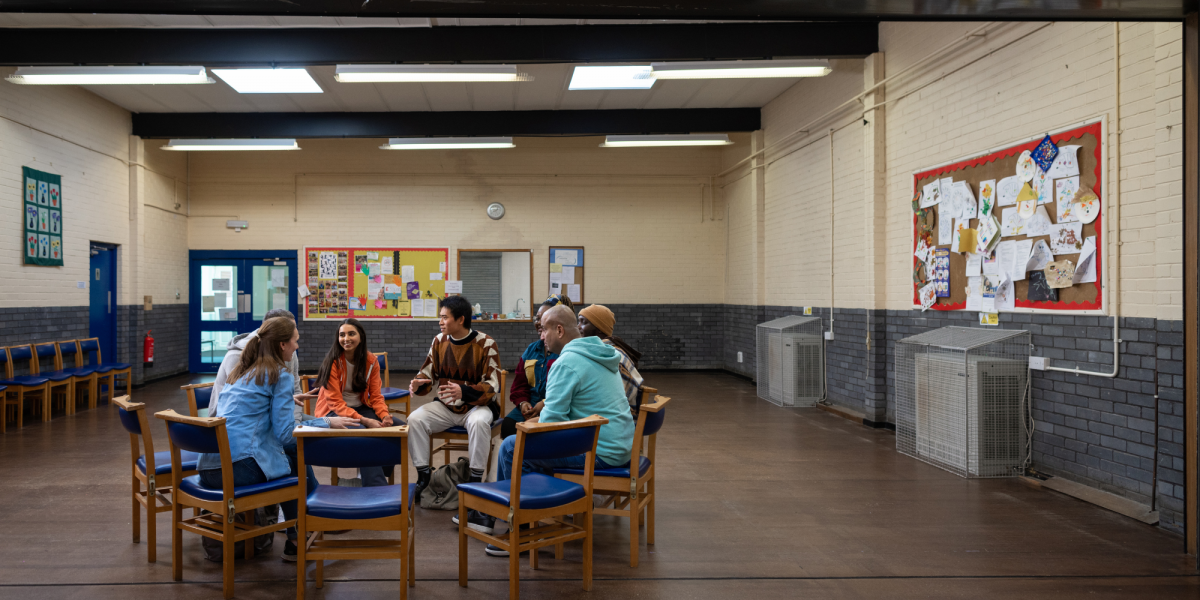
40 Top Tools for Community Engagement
Each of these tools – whether a conceptual framework, a practical toolkit, a digital platform, a participatory method, or a guiding methodology – offers unique value for engaging communities and strengthening relationships. Community health and development organizations often combine multiple tools from the list above.
By leveraging these resources, nonprofits, coalitions, and government agencies can ensure their community engagement efforts are inclusive, data-informed, and impactful – ultimately leading to stronger community relationships and improved health outcomes.
Share Your Favorite Community Engagement Tools!
Have you used any of these tools or do you have other favorites not mentioned here? We’d love to hear about your experiences! Share your preferred community engagement tools, frameworks, or methodologies in the comments below. Include what you like about them and how they’ve helped strengthen your community initiatives.
Your insights could help other practitioners discover valuable resources for their own community engagement work. Plus, we’ll update this guide periodically with new tools based on your recommendations!
